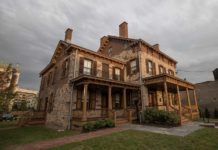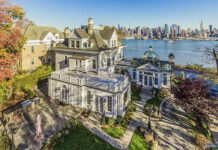 Most locals know all about Jersey City’s upcoming Freedom and Fireworks Festival commemorating the Fourth of July, which will feature fireworks over the Statue of Liberty, live music, and other assorted entertainment. But everyday connections to America’s Revolutionary War are abundant all around Hudson County, which geographically played a strategic role in victory and was later properly planned following the war.
Most locals know all about Jersey City’s upcoming Freedom and Fireworks Festival commemorating the Fourth of July, which will feature fireworks over the Statue of Liberty, live music, and other assorted entertainment. But everyday connections to America’s Revolutionary War are abundant all around Hudson County, which geographically played a strategic role in victory and was later properly planned following the war.
One of the most notable Revolutionary-era relics lies right in the middle of Jersey City’s Downtown. The Paulus Hook neighborhood was actually first built as an American fort in 1776 but ended up under British occupation following defeats in New York City early on in the war. But on August 19th, 1779, the Continental Army launched a nighttime raid on the British-controlled fort, which was actually built in an area that was surrounded by marshland at the time.
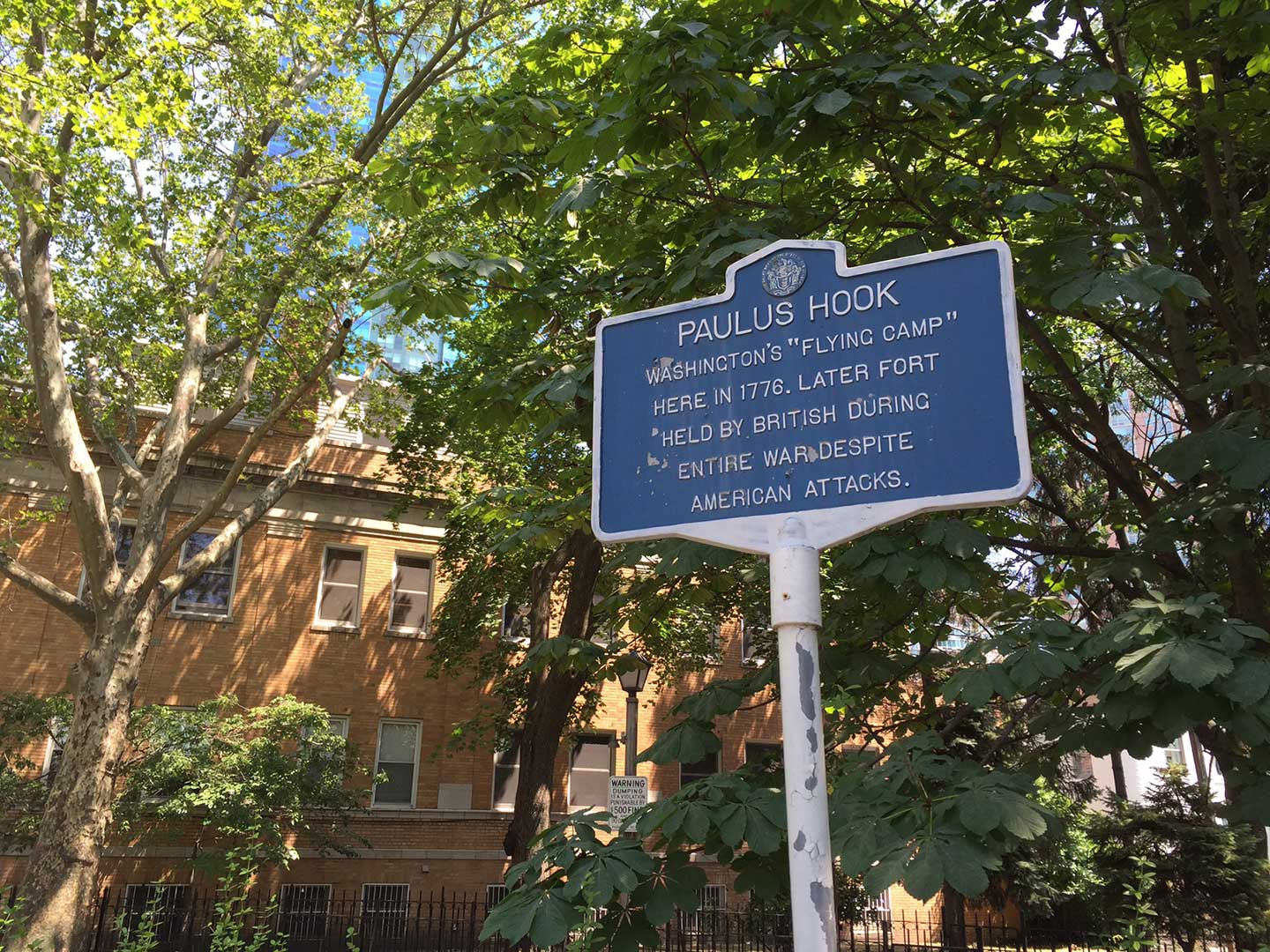

The Americans took 158 prisoners in what became known as the Battle of Paulus Hook. A monument was erected in 1903 at the intersection of Washington and Grand Streets, where much of the fighting took place.
Another Revolutionary War relic that’s currently being restored is the Van Wagenen House, also known as the Apple Tree house. Located at 298 Academy near Bergen Square and built in 1740, the house was used by French-born Marquis de Lafayette in 1779. Lafayette, who had traveled to America to help fight in the Continental Army, met with George Washington at the house and dined under an apple tree in the backyard while discussing strategy against the British army.
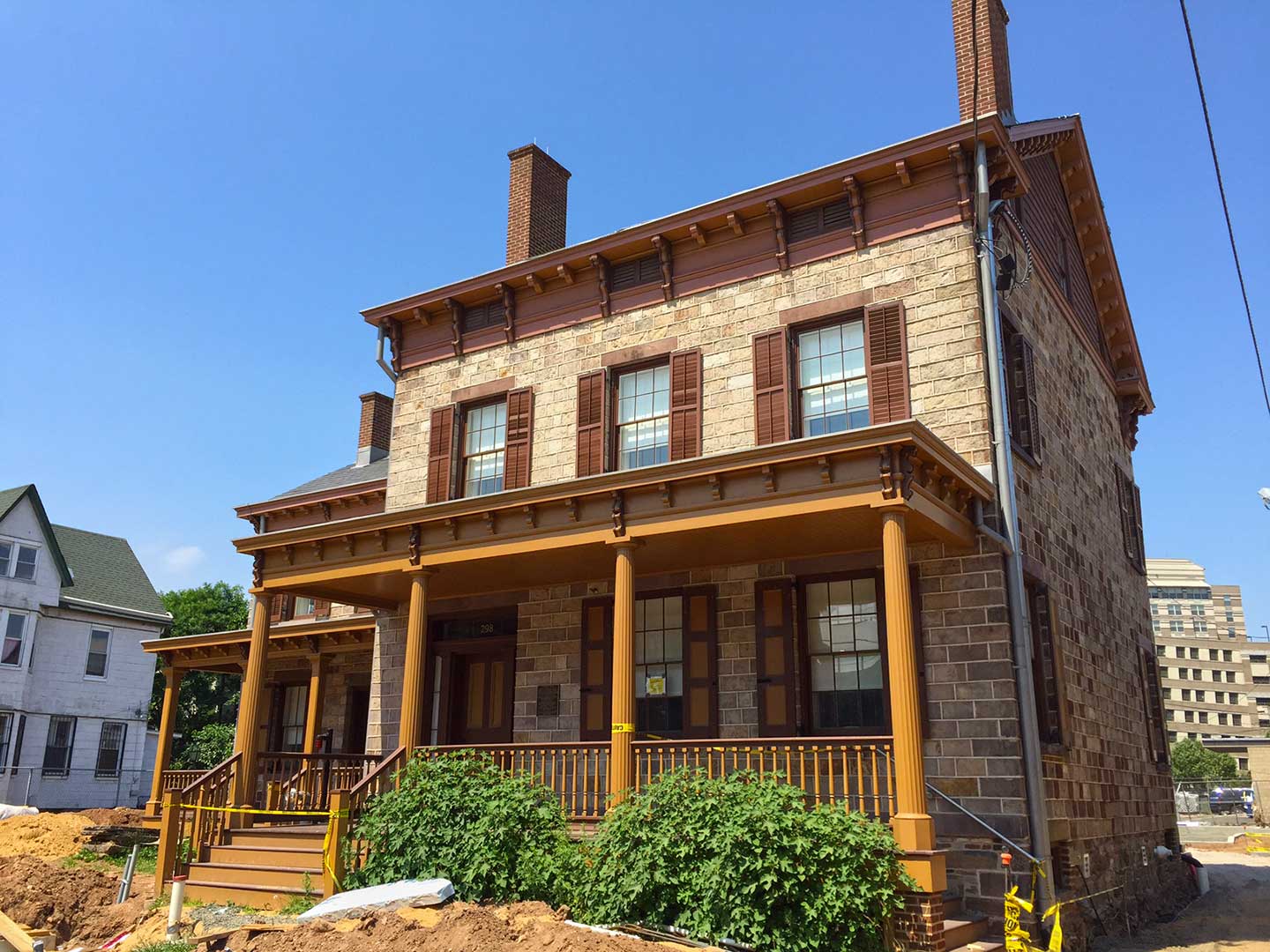
Years later in 1821, the apple tree the pair dined under later fell down during a storm. Shortly thereafter, a local pastor of the Dutch Reformed Church presented Lafayette with a walking cane made of wood from the apple tree, which is now on display at the Louvre Museum in Paris. It bears the inscription “Shaded the Hero, and his friend Washington in 1779–presented by the Corporation of Bergen in 1824.”
Jersey City itself was planned shortly after the war ended. In February of 1804, a group of investors called The Associates of the Jersey Company was founded with the intention of purchasing property at Paulus Hook, eventually planning most of the city’s downtown. The group, which included notable figures like Alexander Hamilton, laid out the city’s squares and streets that still characterize the neighborhood, naming many roads after war heroes (Varick, Mercer, Wayne, and Montgomery among them).
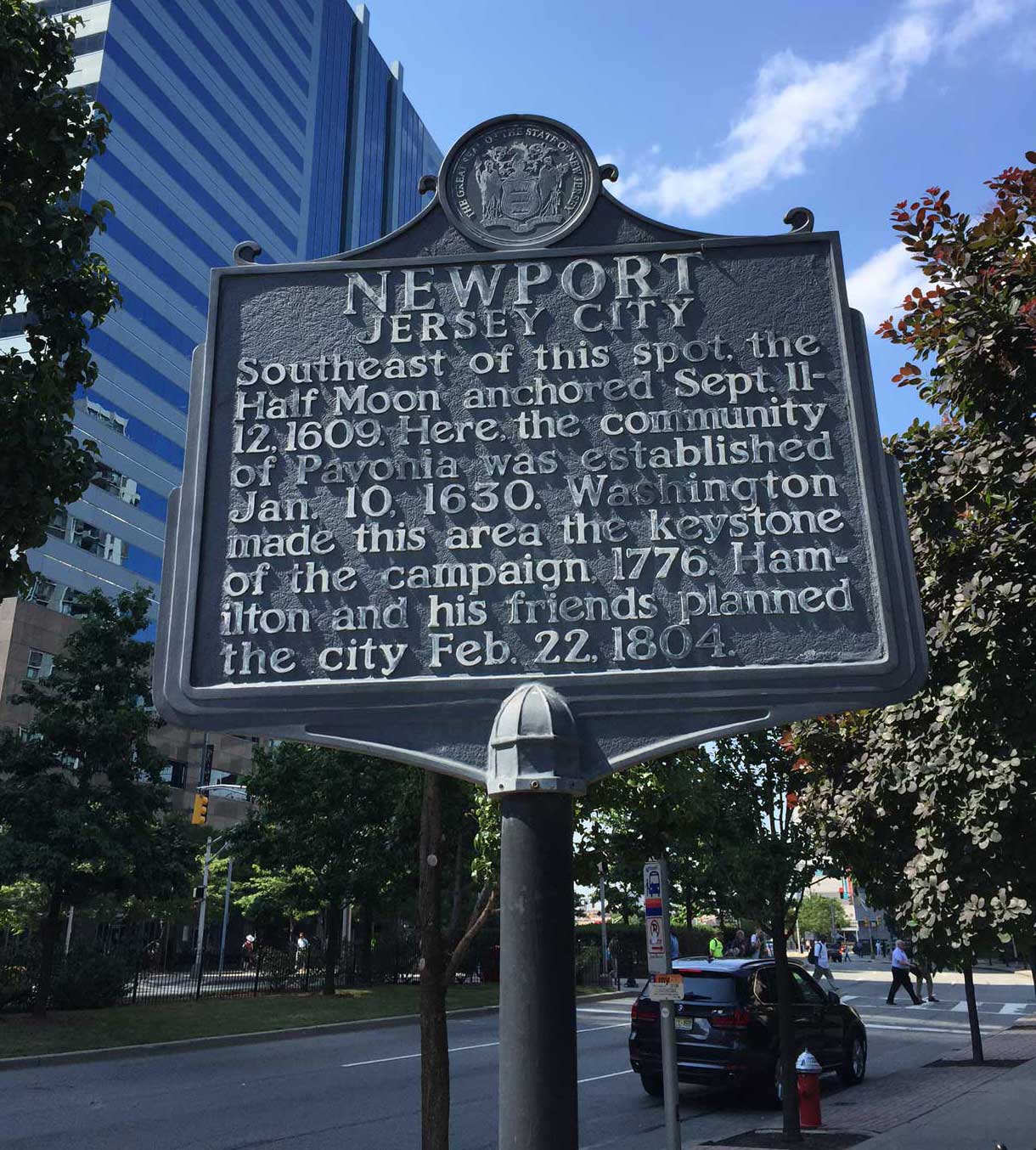 One of the members of that group, Alexander Hamilton, never got to see his efforts in Jersey City completely pay off. In July of 1804, he was killed by then-Vice President Aaron Burr in perhaps the country’s most famous duel. Hamilton and Burr, longtime political rivals, dueled at the top of the Palisades cliffs in Weehawken, an event marked with a plaque and monument on the appropriately named Hamilton Avenue.
One of the members of that group, Alexander Hamilton, never got to see his efforts in Jersey City completely pay off. In July of 1804, he was killed by then-Vice President Aaron Burr in perhaps the country’s most famous duel. Hamilton and Burr, longtime political rivals, dueled at the top of the Palisades cliffs in Weehawken, an event marked with a plaque and monument on the appropriately named Hamilton Avenue.
 The current monument to Hamilton at the dueling grounds is actually the third one built; the first one was destroyed in the 1820s by locals who were protesting against duels. The second one was also damaged by vandals sometime in the early 1930s, leading to the construction of the current one in 1935.
The current monument to Hamilton at the dueling grounds is actually the third one built; the first one was destroyed in the 1820s by locals who were protesting against duels. The second one was also damaged by vandals sometime in the early 1930s, leading to the construction of the current one in 1935.
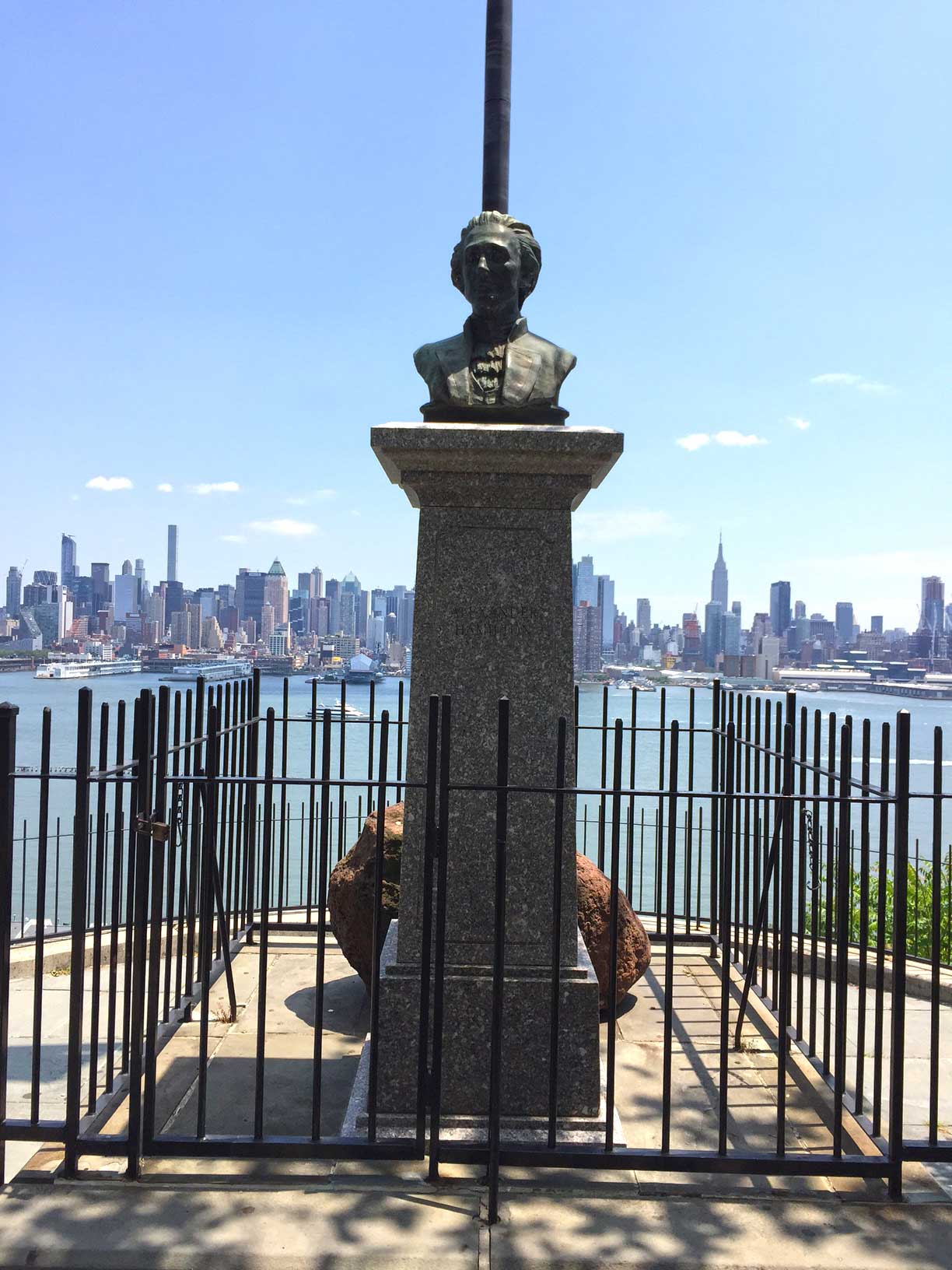
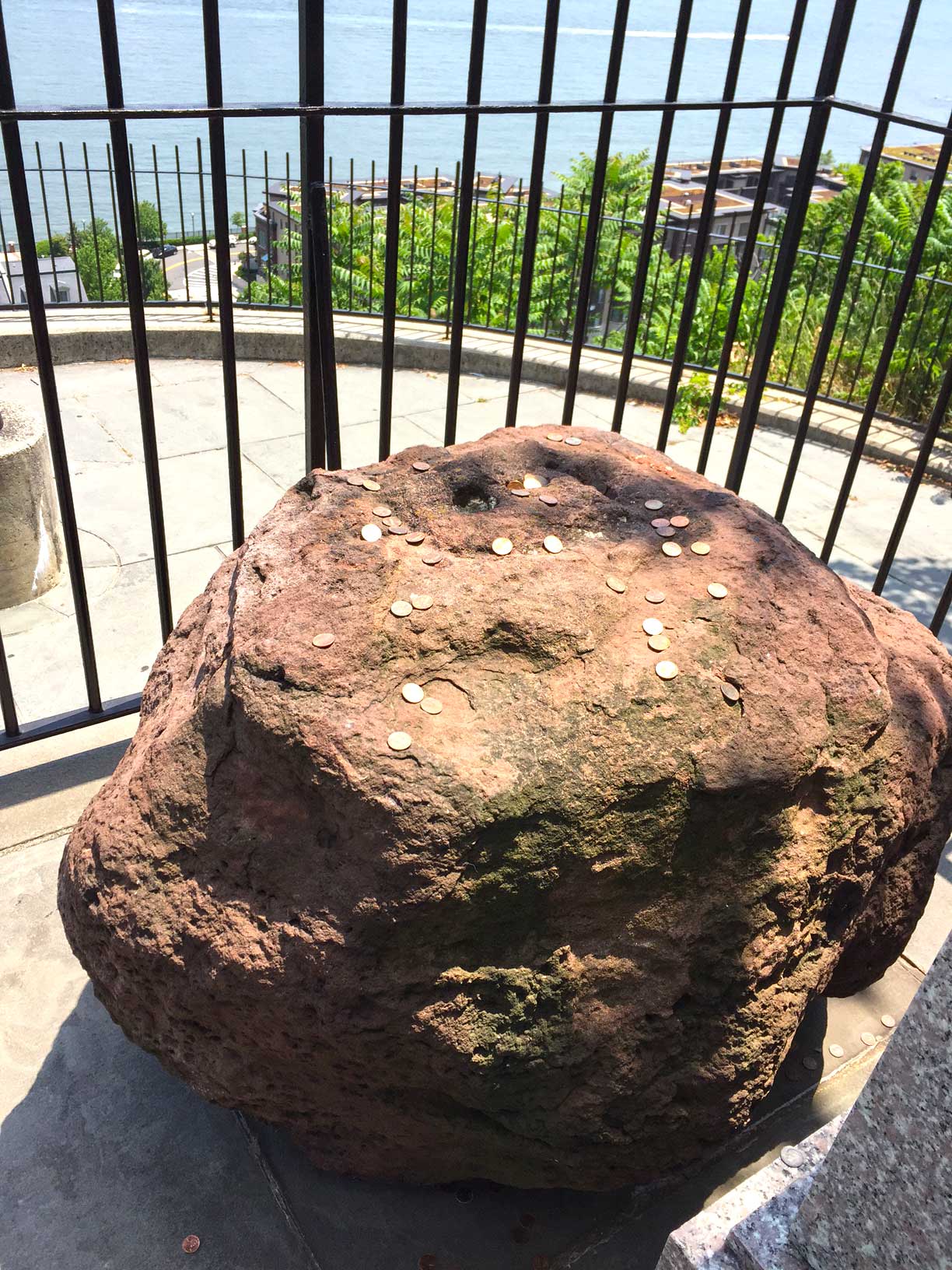 Behind Hamilton’s bust at the monument lies a large stone that legend claims Hamilton rested against after being shot. In recent years, visitors have left pennies on the rock, a nod to Hamilton’s role as the first Secretary of the Treasury.
Behind Hamilton’s bust at the monument lies a large stone that legend claims Hamilton rested against after being shot. In recent years, visitors have left pennies on the rock, a nod to Hamilton’s role as the first Secretary of the Treasury.
Shortly after Hamilton’s death, John B. Coles, a Federalist from New York and one of the figures behind the Associates of the Jersey Company, initiated the plan for a public park in Jersey City to be named in his honor, leading to the creation of Hamilton Park in the early nineteenth century.
So while barbeques and fireworks will likely take center stage this weekend, history buffs can also locally explore the reasons for the holiday, perhaps creating a better appreciation for the festivities.
